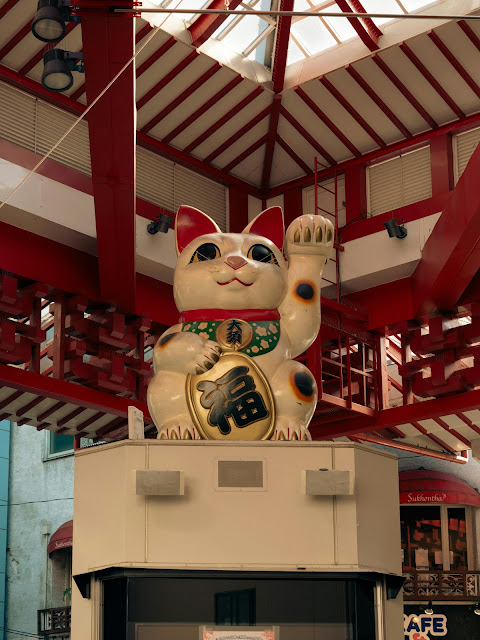Japan Travel Guide
Japan, a country steeped in rich history, vibrant culture, and breathtaking landscapes, is a destination that captivates travelers from around the world. From the bustling streets of Tokyo to the serene gardens of Kyoto, Japan offers a diverse array of experiences that cater to all types of travelers.
Japan Travel Guide
Best Time to Visit Japan
Japan is a year-round destination, but the best time to visit depends on your preferences and what you want to experience.
Spring (March to May): This is one of the most popular times to visit Japan, especially during the cherry blossom season (Hanami) which typically occurs from late March to early April. The weather is mild, and the country is adorned with beautiful blooming cherry blossoms. However, this period is also the busiest, and accommodations can be difficult to find, especially during Golden Week (April 29 – May 5)
Autumn (September to November): Autumn in Japan is renowned for its vibrant foliage, with the manicured gardens and landscapes turning into kaleidoscopes of color. The weather is generally pleasant, making it an ideal time for sightseeing and outdoor activities.
Summer (June to August): Summer in Japan can be quite hot and humid, but it's also a great time to enjoy the country's many beaches and festivals. The Fuji Rock Festival in July and the Tokushima’s Awa Odori Festival in August are highlights of the summer season
Winter (December to February): If you're a fan of skiing or hot springs, winter is a great time to visit. Japan transforms into a winter wonderland, especially in the northern prefecture of Hokkaido. The Sapporo Snow Festival in February is a must-see event
Cultural Insights and Etiquette
Understanding Japanese culture and etiquette can significantly enhance your travel experience.
Respect for Tradition: Japan is known for its strict adherence to tradition and etiquette. For example, when visiting temples or shrines, it's customary to bow upon entering and leaving. Removing your shoes before entering a traditional home or some temples is also a sign of respect
Table Manners: Dining in Japan can be a unique experience. It's considered impolite to leave your chopsticks standing upright in your rice, as this is reminiscent of a funeral ritual. Also, it's customary to wait for the host to start eating before you begin
Public Behavior: Japan is known for its cleanliness and order. Littering is strictly frowned upon, and public drunkenness is generally not tolerated. Following these unwritten rules will help you blend in and avoid drawing unnecessary attention
Must-See Attractions
Tokyo:
Ueno Park: A beautiful park that is especially popular during the cherry blossom season.
Shibuya Crossing: One of the busiest intersections in the world, offering a glimpse into Tokyo's fast-paced lifestyle
Tsukiji Fish Market: While the inner market has moved to a new location, the outer market still offers a fascinating look at Tokyo's seafood culture
Kyoto:
Fushimi Inari Taisha: Famous for its thousands of vermilion torii gates that form a tunnel up the mountain.
Kinkaku-ji (Golden Pavilion): A stunning temple covered in gold leaf, reflecting beautifully in the surrounding pond
Arashiyama Bamboo Grove: A serene and picturesque area with towering bamboo stalks
Hiroshima:
Miyajima Island: Known for its beautiful scenery and the famous Itsukushima Shrine, which appears to be floating during high tide
Hiroshima Peace Memorial Park: A somber reminder of the city's history, featuring the Atomic Bomb Dome and the Hiroshima Peace Memorial Museum
Hokkaido:
Daisetsuzan National Park: A beautiful park with rugged landscapes and opportunities to see brown bears. The park is particularly famous for its challenging hike to Mount Asahidake
Practical Tips for Traveling in Japan
Navigating Japan can be challenging, but with the right tips, you can make the most of your trip.
Transportation:
Japan Rail Pass: This pass is essential for traveling around Japan, especially if you plan to use the high-speed bullet trains frequently. It can significantly reduce your transportation costs
Subway Systems: Major cities like Tokyo and Osaka have complex subway systems. Focusing on the main lines, such as the Yamanote Line in Tokyo, can help you navigate more easily
Accommodation:
Ryokans: Traditional Japanese bed-and-breakfasts that offer a unique and intimate experience. They are known for their traditional tatami floors, communal baths, and included meals
Booking Platforms: Using platforms like Booking.com can help you find the best deals on accommodations. Loyalty programs and discounts can also make your stay more affordable
Food:
Vegetarian and Gluten-Free Options: Japan can be challenging for vegetarians and those with gluten intolerance. Researching ahead of time and using resources like Happy Cow for vegetarian options and gluten-free guides can be very helpful
Convenience Stores: Convenience stores like 7-11 are very popular among locals and travelers alike, offering fresh snacks and other essentials
Communication:
SIM Cards and Tourist Maps: Having a SIM card can be essential for navigating the city, especially if you don't speak Japanese. Downloading a tourist map on your phone can also help you find your way around.
Translations: For vegetarians, having good translations can help communicate dietary restrictions. Apps and guides that provide translations for common phrases and food items are highly recommended
Regional Itineraries
Given Japan's diverse regions, it's often best to focus on a specific area to truly experience its unique vibe.
Tokyo to Kyoto:
- Start in Tokyo and explore its vibrant neighborhoods, then take the bullet train to Kyoto. Spend several days in Kyoto visiting its temples, gardens, and traditional districts[4].
From Kyoto, you can visit nearby cities like Nara and Osaka, each offering their own historical and cultural attractions
Hokkaido:
If you have more time, consider a trip to Hokkaido. This northern prefecture offers stunning natural landscapes, including Daisetsuzan National Park and the beautiful city of Sapporo
Southern Japan:
Visit Hiroshima and Miyajima Island for a mix of history and natural beauty. Then, head to Fukuoka, known for its delicious food and vibrant student culture
Japan is a country that seamlessly blends tradition with modernity, offering a unique travel experience that is both enriching and exhilarating. Whether you're interested in history, culture, food, or nature, Japan has something for everyone. By understanding the best times to visit, respecting local customs, and using practical tips for navigation and budgeting, you can make the most of your trip to this incredible country.
In the words of Steve Jobs,
"You cannot connect the dots looking forward, you can only connect the dots looking backwards."
For many travelers, Japan becomes a life-changing destination that leaves an indelible mark. So pack your bags, grab your camera, and get ready to immerse yourself in the wonders of Japan.












Comments
Post a Comment